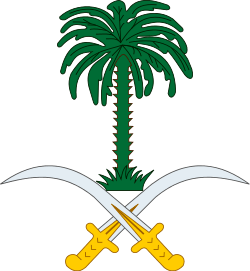Flag of Saudi Arabia
 | |
| Use |
State and war flag, state and naval ensign |
|---|---|
| Proportion | 2:3 |
| Adopted | March 15, 1973 |
| Design | A green field with the Shahada or Muslim creed written in the Thuluth script in white above a horizontal saber, in which the tip was pointed to the hoist-side in the center. |
The flag of Saudi Arabia (Arabic: علم المملكة العربية السعودية) is the flag used by the government of Saudi Arabia since March 15, 1973. It is a green flag featuring in white an Arabic inscription and a sword. The inscription is the Islamic creed, or shahada.
Design
The Arabic inscription on the flag, written in the calligraphic Thuluth script, is the shahada or Islamic declaration of faith:
- لَا إِلٰهَ إِلَّا الله مُحَمَّدٌ رَسُولُ الله
- lā ʾilāha ʾillā-llāh, muhammadun rasūlu-llāh
- There is no god but God: Muhammad is the Messenger of God."[1]
.svg.png)
The green of the flag represents Islam and the sword stands for the strictness in applying justice.[2]
The flag is manufactured with identical obverse and reverse sides, to ensure the shahada reads correctly, from right to left, from either side. The sword points to the left on both sides, in the direction of the script. The flag is sinister hoisted, meaning that it is hoisted to the left of the flagpole, as viewed from the obverse (front) side. (Flagpole is to the right of the flag). The flag's green is Pantone 349 C (C90, M12, Y95, K40)[3]
Use

Because the shahada is considered holy, the flag is not normally used on T-shirts or other items. Saudi Arabia protested against its inclusion on a planned football to be issued by FIFA, bearing all the flags of the participants of the 2002 FIFA World Cup. Saudi officials said that kicking the creed with the foot was completely unacceptable. Similarly, an attempt by the U.S. military to win favour with children of the Prost region of Afghanistan by distributing footballs adorned with flags, including that of Saudi Arabia, ended in demonstrations.[4]
The flag is never lowered to half-mast as a sign of mourning, because lowering it would be considered blasphemous.[5] Similarly, the flags of Somaliland and Iran are also never at half-mast.[6]
The normal flag cannot be hoisted vertically according to Saudi legislation. Special vertical flags are manufactured where both the inscription (the creed) and the emblem (the sword) are rotated, although this is rare, as most Arab countries traditionally do not hoist flags vertically.[7]
History
The Al Saud, the ruling family of Saudi Arabia, has long been closely associated with the Wahhabi religious movement. The Wahhabis, since the 18th century, had used the shahada on their flags.[8] In 1902 Abdulaziz Abdulrahman Al-Saud, leader of the Al Saud and the future founder of the Kingdom of Saudi Arabia, added a sword to this flag.[8] The design of the flag was not standardized prior to March 15, 1973, and variants with two swords and/or a white vertical stripe at the hoist were frequently used. By 1938, the flag had basically assumed its present form, except the sword had a different design (with a more curved blade) and it, along with the shahada above, took up more of the flag's space.
.svg.png) Variant of the flag in use from 1932 to 1934, with white stripe on the hoist. |
.svg.png) Variant of the flag in use from 1934 to 1938, with a thinner white stripe. |
.svg.png) Variant of the flag in use from 1938 to 1973, with no stripe. |
Past flags
The precursor states to Saudi Arabia were Nejd and Hejaz. The state flag of Nejd followed today's Saudi flag pattern very closely. The state of Hijaz followed the patterns seen in countries like Palestine and Sudan. From 1744 a crescent was present. From 1902 until 1921 a different Arabic inscription was used. One of the primary opponents to the Saudis was the Al Rashid family in the north of the peninsula, until their defeat in 1921.
 Flag of the Umayyad Caliphate, from 661 to 750
Flag of the Umayyad Caliphate, from 661 to 750 Flag of the Abbasid Caliphate, from 750 to 1517
Flag of the Abbasid Caliphate, from 750 to 1517 Flag of the Emirate of Ha'il, from 1835 to 1920
Flag of the Emirate of Ha'il, from 1835 to 1920 Flag of the Emirate of Ha'il, from 1920 to 1921
Flag of the Emirate of Ha'il, from 1920 to 1921 Flag of the First Saudi State, from 1744 to 1818
Flag of the First Saudi State, from 1744 to 1818 Flag of the Second Saudi State from 1824 to 1891
Flag of the Second Saudi State from 1824 to 1891 Flag of the Emirate of Nejd and Hasa from 1902 to 1921
Flag of the Emirate of Nejd and Hasa from 1902 to 1921.svg.png) Flag of Nejd from 1921 to 1926, closely resembling the modern Saudi flag.
Flag of Nejd from 1921 to 1926, closely resembling the modern Saudi flag..svg.png) Flag of Nejd from 1926 to 1932, with a white border and no sword.
Flag of Nejd from 1926 to 1932, with a white border and no sword.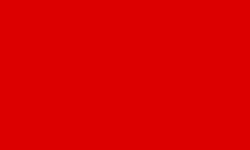 Provisional Flag of Hejaz, 1916 to 1917
Provisional Flag of Hejaz, 1916 to 1917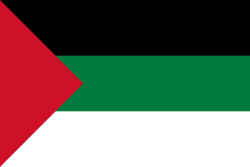 Flag of Hejaz from 1917 to 1920, based on the Flag of the Arab Revolt.
Flag of Hejaz from 1917 to 1920, based on the Flag of the Arab Revolt. Flag of Hejaz from 1920 to 1926
Flag of Hejaz from 1920 to 1926 Flag of Hejaz from 1926 to 1932
Flag of Hejaz from 1926 to 1932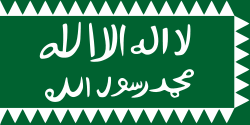 Flag of Idrisid Emirate of Asir from 1906 to 1934
Flag of Idrisid Emirate of Asir from 1906 to 1934
Other flags
The civil ensign, for use by merchant vessels at sea, is a green flag with the state flag in the canton with a white border. The royal standard is the state flag with the palm tree and swords in the canton.

 Royal Standard Saudi Arabia (Ratio: 2:3)
Royal Standard Saudi Arabia (Ratio: 2:3).svg.png)
 Civil ensign. (Ratio: 2:3)
Civil ensign. (Ratio: 2:3)
 Flag of Chief of General Staff of the Armed Forces. (Ratio: 5:7)
Flag of Chief of General Staff of the Armed Forces. (Ratio: 5:7)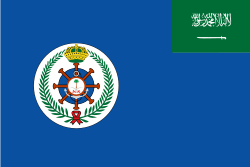
 Flag of the Royal Saudi Naval Forces (Ratio: 2:3)
Flag of the Royal Saudi Naval Forces (Ratio: 2:3) Naval jack (Ratio: 2:3).
Naval jack (Ratio: 2:3).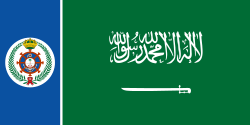
 Naval Ensign of Saudi Arabia. (Ratio: 12:25)
Naval Ensign of Saudi Arabia. (Ratio: 12:25)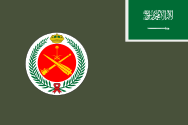
 Flag of the Royal Saudi Air Defense Force (Ratio: 2:3)
Flag of the Royal Saudi Air Defense Force (Ratio: 2:3)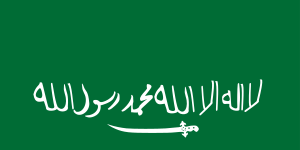
Similar flags
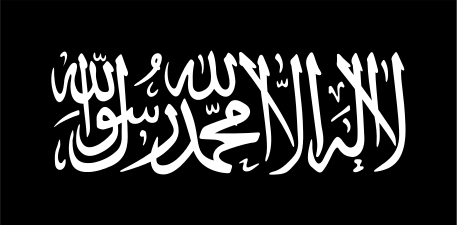 Flag of Al-Qaeda
Flag of Al-Qaeda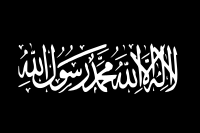 Flag of the Islamic Courts Union
Flag of the Islamic Courts Union Flag of Shabaab Mujahideen
Flag of Shabaab Mujahideen

References
- ↑ "About Saudi Arabia: Facts and figures". The Royal Embassy of Saudi Arabia, Washington D.C. Archived from the original on 2012-04-17. Retrieved 2016-08-05.
- ↑ Eriksen, Thomas; Jenkins, Richard (2007). Flag, Nation and Symbolism in Europe and America. p. 171. Retrieved 3 October 2012.
- ↑ UN Map Library
- ↑ Leithead, Alastair (2007-08-26). "'Blasphemous' balls anger Afghans". BBC News Online. Retrieved 2007-08-26.
- ↑ "Saudi King Fahd is laid to rest". BBC News. 2 August 2005.
- ↑ http://iqna.ir/en/news/1564841/no-halfmast-flags-on-mourning-occasions-
- ↑ Saudi Arabia, FOTW Flags Of The World, 19 January 2008. Accessed 13 May 2009.
- 1 2 Firefly Guide to Flags of the World. 2003. p. 165. ISBN 978-1552978139. Retrieved 12 September 2012.
External links
| Wikimedia Commons has media related to Flags of Saudi Arabia. |
- Saudi Arabia at Flags of the World
- World Flags Information, Saudi Arabian page
- Saudi Arabian flag and associated information
